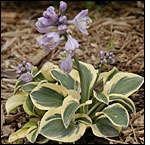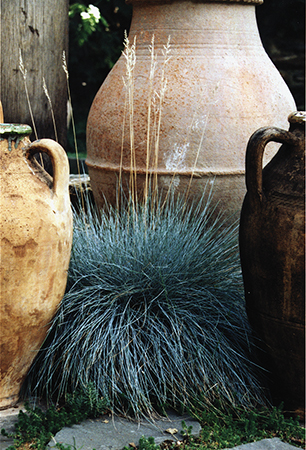New Perennials For 2010

Here are a few new perennials mail-order nursery Wayside Gardens is introducing for 2010.
Hosta ‘Mighty Mouse’
In early summer, abundant lavender blooms on 12-inch scapes top the foliage, luring hummingbirds to come feast in the shade. The leaves remain until winter frost, always looking their best. This Hosta earns its name with very substantial, thick leaves that resist nibbling from snails and slugs, but its best merit is its lovely variegation. In spring the leaves are bold blue-green with a creamy yellow edging; by summer they have become gray-green and the variegation is creamy white, but it is still constant, refusing to green out even in hot climates.
Echinacea ‘Coral Reef’
Not only are these blooms brilliantly colored, at 4 inches wide they’re quite large, and they release a lovely spicy-honey fragrance that is quite noticeable in the garden as well as in the vase. Expect the flowers to begin in midsummer in most climates, continuing through the early part of fall until the onset of seriously cold weather.
Berberis thunbergii Golden Ruby
Each small leaf of this deciduous shrub unfurls brilliant orange-scarlet in spring, darkening as spring turns to summer into a rich shade of plummy crimson while acquiring a bright, non-fading golden edge. Tiny yellow blooms also decorate the shrub in spring, but these are insignificant alongside the dramatic foliage. Even in hot, long-summer climates, Golden Ruby keeps its variegation and its bold colors beautifully, refusing to yield until the first frosts of winter bring the leaves to the ground.
Campanula ‘Viking’
These watercolor-clear lilac bells are held straight out, clustered around a central stem. They begin in late spring and continue through midsummer in most climates, very tightly packed on a plant just 15 to 18 inches high in full flower and 18 to 24 inches wide. The source of this bloom strength is sterility: ‘Viking’ concentrates all its energy on making blooms, not seeds, and it will not self-sow in the garden, like some other Campanula.
Hydrangea paniculata Little Lime
Just 3 to 5 feet high and wide, Little Lime is ideal for containers, a low hedge, or specimen use as well as the border. It thrives in full sun in northern climates, afternoon shade farther south and west. Unlike H. macrophylla cultivars, it is quite drought-tolerant, and hardy through zone 3 in the north. In other words, this is a thoroughly adaptable dwarf shrub.
Lavandula angustifolia Silver Edge
The fragrant variegation is very compact and unbelievably colorful: the center of each leaf is a rich blue-green, the middle portion is the familiar green of other L. angustifolia, and the margins are a creamy white that mature to silver. In mid- to late summer, deep violet-blue blooms sway atop the foliage on slender stalks, offering a royal picture of purple and silver that looks as good in the vase as in the garden. And if you live in the warmer portion of Silver Edge’s hardiness range, the foliage remains evergreen all winter.
Leucanthemum superbum ‘Banana Cream’
Measuring 4 inches across, these blooms are technically semi-double, an extra layer of petals beneath the first adding depth and still more color to the display. The bloom season begins in late spring in most climates, continues through summer, and even trickles into autumn. That’s an incredible span for any plant, and much longer than most Shastas. Far more disease-resistant than older varieties, this perennial asks little more than direct sun and fertile, well-drained garden soil to thrive and multiply over time in the garden.
For more information on Wayside Gardens, visit WaysideGardens.com.










